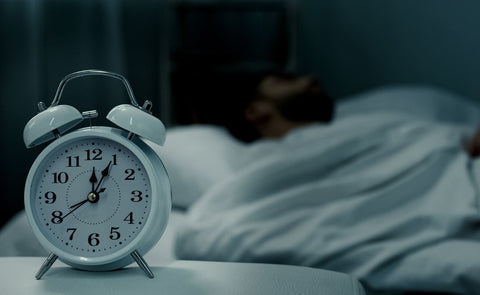Sleep Posture: The Hidden Back-Care Tool
You think about sitting at your desk or standing in line, but Good Sleeping Posture often slips under the radar. When you drift off, the muscles and discs in your spine switch to repair mode. If your body is twisted like a pretzel, they can’t recharge properly. Keep reading—you’ll see how a few simple tweaks can help you wake up limber instead of stiff.
What Counts as Good Sleeping Posture?
Picture your ears, shoulders, and hips stacked in one straight line, even while you’re horizontal. That’s the sweet spot. Your mattress fills the curves beneath you, and your pillow supports the natural bend of your neck rather than forcing it up or down. The goal is to hold your spine close to its neutral “S” shape so it can relax instead of fighting gravity all night.
Why Your Spine Cares How You Snooze
When alignment is on point, several things happen:
-
Disc rehydration: Spinal discs pull in fluid, acting like tiny shock absorbers for the next day.
-
Muscle recovery: Muscles around the vertebrae loosen, flush out waste, and rebuild.
-
Nerve calm: Aligned joints avoid pinching nerves that can trigger morning numbness or tingling.
-
Hormone rhythm: Deep, pain-free sleep lets your body release growth and repair hormones on schedule.
Miss that alignment, and discs stay compressed while muscles tighten around crooked joints—hello, morning ache.
Mattress Matters: Building a Solid Foundation
You don’t need the priciest model in the showroom, but you do need support that matches your body type and favorite position.
-
Medium-firm suits most backs. It’s soft enough for the shoulders and hips to sink a bit, yet firm enough to stop sagging.
-
Try the hand test. Lie down and slide a flat hand between your lower back and the mattress. If the gap is huge, it’s too hard; if you can’t slide your hand at all, it’s too soft.
-
Age of the mattress: Replace it every 6–8 years or when you notice valleys that your body falls into at night.
Sleeping with a partner? Bigger mattresses (queen or king) let both of you stretch out without nudging each other out of alignment.
Pillow Talk: Head, Neck, and Beyond
Pillows aren’t just for your head. Think of them as strategic props:
-
Head pillow: Keeps your nose in line with your sternum. Too high = chin to chest; too low = head tilts back.
-
Knee pillow (side sleepers): A firm cushion between your knees stops your top leg from dragging your spine into a twist.
-
Knee pillow (back sleepers): A small roll under the knees keeps the natural curve in your lower back.
-
Stomach sleeper support: A flat pillow under the pelvis can ease pressure if you absolutely must lie face-down.
Swap head pillows every year or when they no longer bounce back after a squeeze.
Nail Your Favorite Sleeping Position
Back Sleepers
-
Rest a thin roll under your knees.
-
Use a medium-loft head pillow that fills the neck curve without propping the head forward.
-
Keep arms by your sides or on your belly to avoid shoulder strain.
Side Sleepers
-
Pull knees slightly toward your chest.
-
Place a firm pillow between the knees and another snug against your waist if there’s a gap.
-
Choose a thicker head pillow so your neck stays level with your spine.
Stomach Sleepers
Sleeping face-down arches the lower back and cranks the neck. If that’s the only way you drop off:
-
Skip the head pillow or use a wafer-thin one.
-
Slide a slim cushion under the stomach and hips to flatten the lumbar curve.
-
Turn the whole body in one piece when rolling—don’t twist at the waist.
Pre-Bed Moves That Make a Difference
Five minutes of gentle motion sets you up for aligned slumber:
-
Cat-cow stretch (30 seconds): Loosens spinal joints.
-
Child’s pose (1 minute): Opens hips and elongates the back.
-
Knee-to-chest hug (each side, 30 seconds): Releases lower-back tension.
-
Thoracic bridge (10 reps): Mobilizes the mid-back, countering screen-time hunching.
Breathe slowly, and stop before any move feels sharp.
Lifestyle Tweaks That Support Nighttime Alignment
-
Daily movement: Walking, swimming, or yoga keeps core muscles strong so they hold you in place on the mattress.
-
Healthy weight: Extra midsection weight can deepen the lumbar curve and strain discs.
-
Ergonomic daytime setup: A well-adjusted office chair prevents the build-up of posture stress you’ll carry into bed.
-
Hydration: Discs are made mostly of water; sip throughout the day so they can sponge up fluid overnight.
Mistakes to Ditch Tonight
-
Texting in bed: Propped on one elbow while the neck cranes forward—pain waiting to happen.
-
Huge, overstuffed pillows: They push your head forward like you’re sitting in an airplane seat.
-
Flopping into bed: Use your arms to lower yourself in one piece; sudden twists can tweak sleepy joints.
-
Old, uneven mattresses: No amount of pillow-tucking saves a canyon in the middle of the bed.
Track Your Progress
-
Morning body scan: Before you sit up, notice any spots that feel tight or sore.
-
Paid journal: Jot quick notes—position used, pillow arrangement, wake-up comfort level. Trends show what works for you.
-
Photo check: Every few weeks, snap a side-view photo while you lie in your usual pose. Are ears, shoulders, and hips still lined up?
Wake Up Ready to Go
Great days often start with great nights. By giving your spine a neutral, supported home for seven or eight hours, you cut down morning stiffness, reduce flare-ups, and stack the odds for a pain-free day. Grab the right mattress, stage your pillows like a pro, and make Good Sleeping Posture your new nightly routine—your back will thank you at sunrise.



